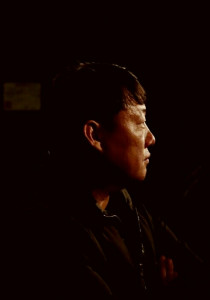Along with the spread of Iron Age culture and the formation of farming society, powerful kingdoms such as Goguryeo, Baekje and Silla gradually were established in Manchuria and on the Korean Peninsula. This era dominated by the three kingdoms is called ‘The Three Kingdoms Period of ancient Korea (57 BCE – 668 CE)’. These states were in constant rivalry, and so they formed ever-changing alliances one with another.

Gwanbukri Historic Sites in Buyeo

An 8.3m high five-story stone pagoda in Jungnimsa temple site in Buyeo

Archaeological Site in Wanggung-ri in Iksan

Naseong City Wall in Buyeo

Stone pagoda in Mireuksa Temple Site in Iksan
Goguryeo was the first of the three to strengthen a king-centered sovereignty and was a highly militaristic state. Silla had the slowest development of the three and took the last-mover advantage. On the other hand, Baekje, which is in the limelight of this writing, was the cultural powerhouse of the three kingdoms. Three successive capitals of Baekje divide the history into three periods: Hanseong Period (present-day Seoul, 18 BCE– 475 CE), Ungjin Period (Gongju, 475 – 538 CE), and Sabi Period (Buyeo and Iksan, 538 – 660 CE). Unfortunately, there are few surviving buildings from this ancient period. However, archaeology and surviving tombs and their artefacts have led historians to identify the principal characteristics of palace and temple architecture throughout our period.

Dong-ju Lee Ph.D, the director of Baekje World Heritage Center
The art and architecture of the Baekje kingdom are generally considered the finest of the three. According to Dong-ju Lee Ph. D, the director of Baekje World Heritage Center, Baekje harnessed the ‘Soft Power’ approach to foreign policy and played a critical role as a hub of the development of ancient culture on the Korean Peninsula. As the superiority and historical value of its relics were internationally recognized, Baekje Historic Areas became the most recent addition to Korea’s UNESCO World Heritage catalog, being put on the famed list in July 2015.

Gonsanseong Fortress in Gongju

Neungsanri ncient Tombs in Buyeo
Baekje Historic Areas, located in the mid-western region of the Republic of Korea, is a serial nomination of archaeological resources that are intimately associated with the capitals of Baekje particularly related to the Ungjin and Sabi periods. The eight components includes Gongsanseong Fortress and royal tombs found in Gongju; the Busosanseong Fortress and Gwanbok administrative buildings, Jeongnim Temple, Neungsan royal tombs, and the Naseong city wall located in Buyeo; and the Wanggung Palace and Mireuksa Temple in Iksan.

Royal tombs of Songsan-ri in Gongju
These nominated properties, according to UNESCO, are an exceptional testimony to the active interchange that evolved between Korea, China, and Japan during the ancient times. Despite the conflicts between China and the various Korean states over the centuries, Baekje and China were frequent trading partners and close cultural ties with free-willing agents. Baekje adopted literature, burial practices, religion and elements of art and construction from China, further developed them by itself, and transmitted them to Japan and other neighboring countries. Many surviving wooden buildings in Japan contain elements of Baekje architectural design as a great number of Baekje craftsmen went there when Wa Japan was an ally.

Bakje World Heritage Festival 2021
Descents from Baekje gather to reincarnate the glory of Baekje arts this summer.

Festival Director Jung-min Byun
Based on the historical facts, Baekje Heritage Center holds “ Baekje World Heritage Festival ” from August 13th to 29th. It consists of 22 different events. Dynamic performance was organized under the baton of Jung-min Byun director to express four values of Baekje relics ㅡ ‘dynamics’, ‘revival’, ‘coexistence’, and ‘harmony’ ㅡ into four different scenes. The choreography was directed by a rising choreographer, Hyo-jung Ahn who is also the CEO of ‘The Creative Pan’. According to director Byun, music and performance were arranged and recreated from the traditional styles of Baekje. The closing ceremony shows the crystal ball of light, the heart of Baekje’s heritage, being delivered to the children of the future, conveying a message that now is not the end, but the beginning. You can enjoy the festival both online and offline in Korea so that it can be an opportunity to resound the superiority of Baekje Historic Areas to global populations.
As evidence of the unique cultural traits and traditions that differed from China and Japan and that flourished on the Korean Peninsula, Baekje Historic Areas should be considered as ‘world heritage’ not as a local or regional relics. Under conservation management, this heritage should be passed down to the next generations. Baekje World Heritage Festival 2021 will let the legacy continue for ages.
Kayla Hong
Asia Journal












